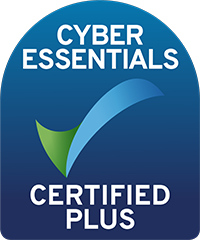What Needs to be on a VAT invoice?
Newsletter issue - May 08.
You must have a valid VAT invoice in order to reclaim VAT charged on the goods or services you buy. When dealing with a new supplier check that their invoice includes all of the following details:
- The suppliers name, address and VAT registration number
- The name and address of the person to whom the goods are supplied (this will be your business)
- A unique identification number (see below for new rules)
- Date of issue
- Time of supply of the goods or services (this may be the same as the date of issue)
- A description of the goods or services supplied
- For each description of goods or services:
- The unit price (see below for exceptions)
- The rate of VAT charged
- The amount payable excluding VAT
- The total amount payable for the whole invoice excluding VAT
- Rate of any discount available
- Total amount of VAT charged
VAT invoices must generally be in pounds sterling, but where you have received an invoice expressed in a foreign currency, as long as the sterling equivalent is shown for the total payable and the total VAT due, the invoice will be a valid VAT invoice. The wording on the invoice does not have to be in English, but if you get a VAT inspection you will have to produce a translation of the invoice into English if the VAT officer asks for one.
There are two relatively recent changes to the VAT invoice rules you should check for your own business:
Unit price
Since 2004 a VAT invoice must include the unit price of any 'countable' goods or services. So if you charge by the hour you need to show your hourly rate. However, if it is not the usual practice in your business sector to show this information you don't have to, as long as your customer doesn't demand it.
Unique identification number
From October 2007 each of your VAT invoices must have a unique and sequential number. If you restart your invoice numbering each year this could lead to identically numbered invoices in different years. You can use separate invoice sequences for different customers as long as each sequence of invoices is separate and unique. You can also use customer prefixes on the invoices, as long as no two customers have the same prefix.
Charities & Not For Profit
We have been providing charity clients with high quality, specialist advice and service for many years, and our charity clients range from small village halls to large national organisations...

Farming Industry
The largest industry sector that we deal with is farming, as you would expect in a rural practice. This means that we have developed considerable expertise in this field...

 Cookies are small text files that are stored on your computer when you visit a website. They are mainly used as a way of improving the website functionalities or to provide more advanced statistical data.
Cookies are small text files that are stored on your computer when you visit a website. They are mainly used as a way of improving the website functionalities or to provide more advanced statistical data.












